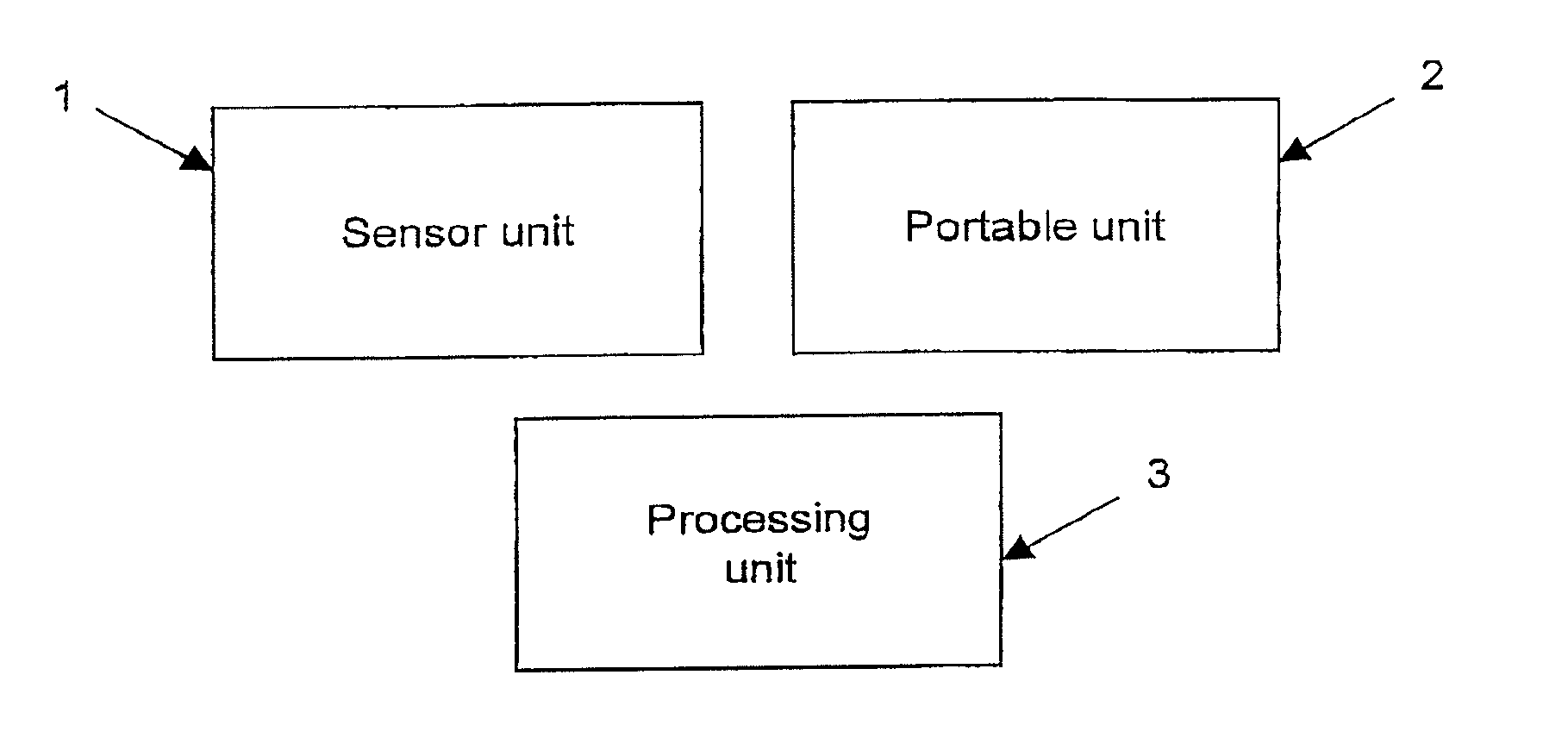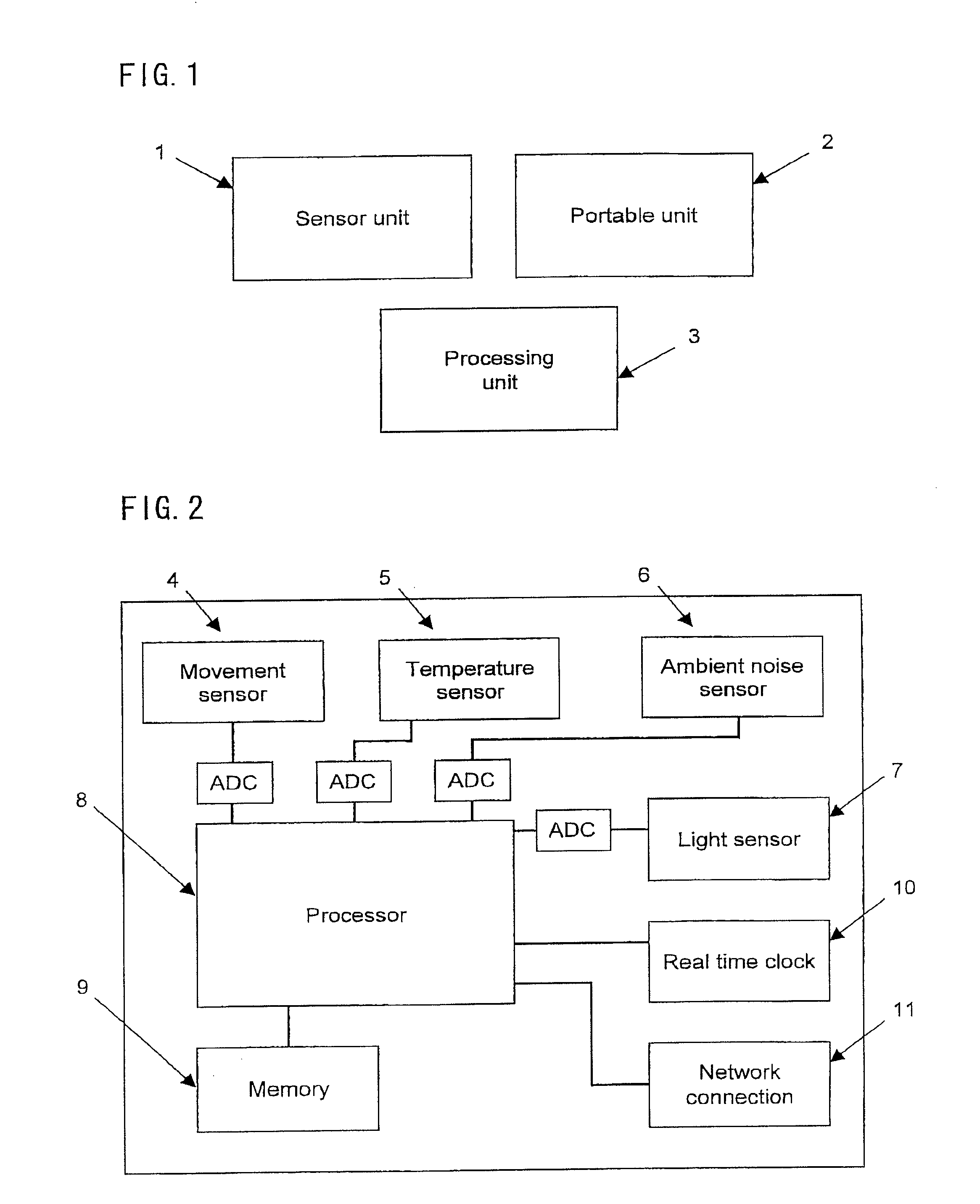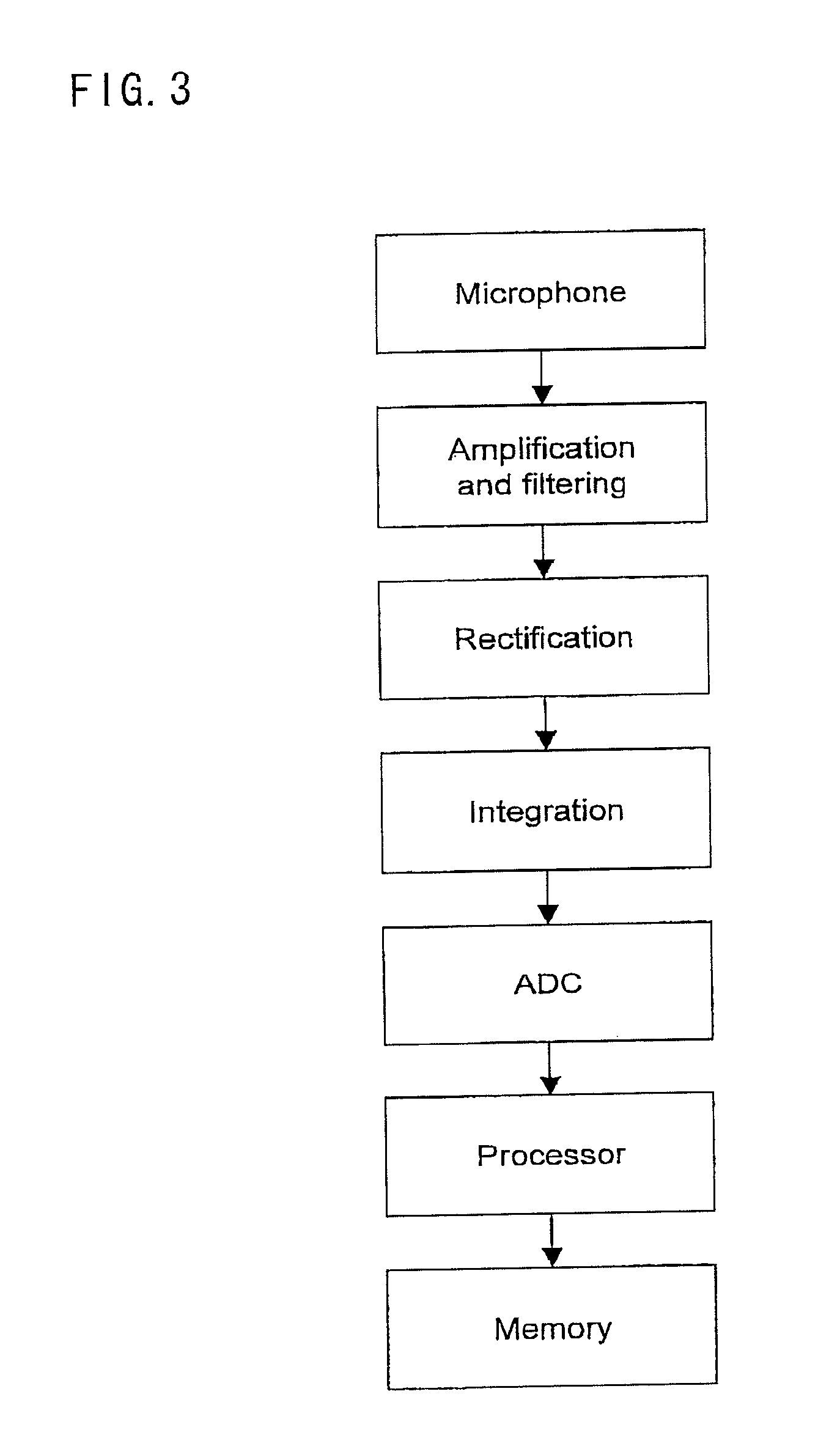Sleep management method and system for improving sleep behaviour of a human or animal in the care of a carer
a carer and sleep management technology, applied in the field of child care care, can solve the problems of children's difficulty in going to sleep, lack of good quality sleep in children, and the whole family is often affected, so as to and improve the sleep behaviour of the human or animal
- Summary
- Abstract
- Description
- Claims
- Application Information
AI Technical Summary
Benefits of technology
Problems solved by technology
Method used
Image
Examples
embodiment 1
[0090]In a first embodiment, the system comprises a sensor unit (1), a portable unit (2) and a processing unit (3). The sensor unit comprises a plurality of sensors (4, 5, 6, 7), hardware and / or software to carry out such data processing as may be necessary (8) and a network connection (11) so as to send data to and receive data from the processing unit. The portable unit comprises a means of communicating information to the parent or other carer (18), a means of recording input from the carer (19) and a network connection (20) so as to send data to and receive data from the processing unit. The processing unit comprises hardware and / or software (24) to analyse data from the sensor unit and portable unit. The processing unit may be disposed in either the sensor unit or the portable unit or may be disposed in a separate device. The processing unit contains a network connection (26) such as to communicate with the sensor unit and portable unit.
[0091]FIG. 2 illustrates the components o...
embodiment 2
[0174]In embodiment 2 a system is provided as in embodiment 1 where the system is additionally able to provide a printed or electronic record of the child's sleep data and the actions taken by the carer. The format of the data is such as to provide a clear picture of the child's sleep problems. Such a record can be taken to a sleep specialist or doctor who can use the data to understand the child's sleep problems and treat the child as appropriate.
[0175]The treatment may take the form of advising the carer how to use the functions of the system, for example to carry out a behavioural program that the specialist believes is most suitable for the child. The treatment may however not involve using the behavioural program functions of the system.
[0176]The system may be placed in monitoring mode during the course of the treatment by the specialist and further printed or electronic records produced as the treatment progresses. In this way the specialist can monitor the effect of the treat...
embodiment 3
[0177]In embodiment 3 a system is provided as in embodiment 1 where it is adapted for use for training animals and household pets, in particular young dogs. In this embodiment the sensor unit is deployed where the animal typically sleeps, for example a dog basket or kennel. Furthermore, the system is pre-loaded with information on typical sleep patterns for animals, for example dogs of particular ages and breeds. The algorithms are adapted such as to identify sleep problems in animals that may be eliminated by known animal training methodologies.
[0178]In the embodiments of the present invention, an “objective parameter” is meant a parameter that may be measured objectively by a sensor, and that does not require any subjective judgement by a user.
[0179]In some embodiments, the carer is able to improve the sleep behaviour of the human or animal in their care by acting upon the recommendation(s) for behavioural programs and / or for actions for implementation. The recommendations may pot...
PUM
 Login to View More
Login to View More Abstract
Description
Claims
Application Information
 Login to View More
Login to View More - R&D
- Intellectual Property
- Life Sciences
- Materials
- Tech Scout
- Unparalleled Data Quality
- Higher Quality Content
- 60% Fewer Hallucinations
Browse by: Latest US Patents, China's latest patents, Technical Efficacy Thesaurus, Application Domain, Technology Topic, Popular Technical Reports.
© 2025 PatSnap. All rights reserved.Legal|Privacy policy|Modern Slavery Act Transparency Statement|Sitemap|About US| Contact US: help@patsnap.com



